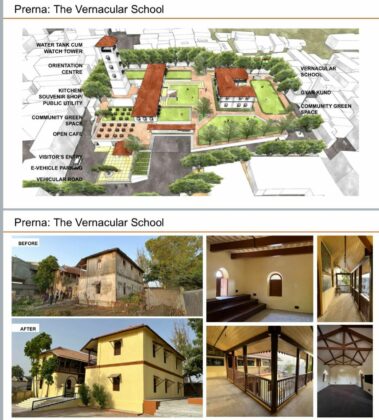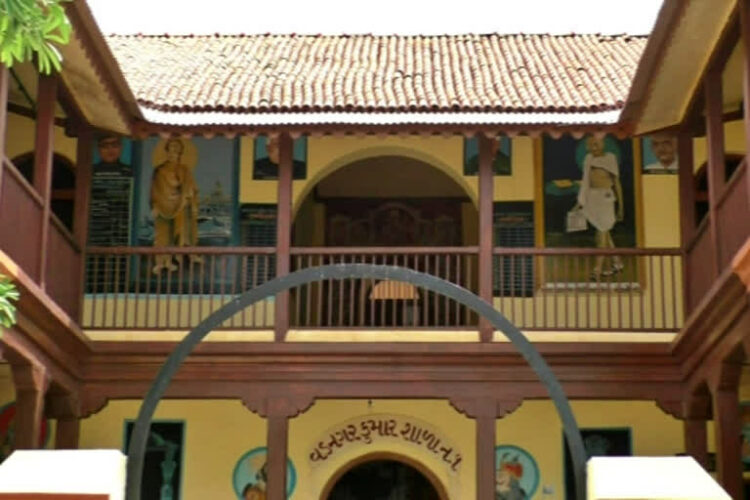According to the reports, the Ministry of Culture is planning to develop Vadnagar in Gujarat into a tourist and cultural hub as a part of its mega development plan. As per the plan, the primary school where Prime Minister Narendra Modi studied will be restored by the Archaeological Survey of India (ASI). The school is a 19th-century old building established in 1888.
The name of the project is ‘Prerna: The Vernacular School’. As per the project, it will be developed into an inspirational school, where students from every corner of the country will study. Even a museum is also coming up to boost tourism. The Government of India will fund the restoration work of this school.

As per the sources, the school will have eight classrooms where they will teach students about the great personalities of India, such as Buddha, Ashoka Mahatma Gandhi, Subhas Chandra Bose and Jawaharlal Nehru. The students will also be taught about the valour and courage of India’s Param Vir Chakra awardees.
According to a source, the school is, “Based on the vision of PM Modi, the first-of-its-kind school redevelopment project ‘Prerna’ is being undertaken to inspire the youth of the country to become catalysts of change. The primary objective is to inspire Indians across all 740 districts in the country from Vadnagar, where it all started”.
As a part of the mega development plan, an Archaeological Experiential Museum Building will also be constructed to showcase the town’s Hindu, Buddhist and Jain heritage.
The Government will develop this museum with an aim to showcase and create an awareness of the unique history of Vadnagar, which has its roots laid before 3 rd Century BC and demonstrates an uninterrupted continuum of human habitation for more than 2500 years. The site picked for the museum project is located near Amba Ghat on the banks of Sharmistha Lake.

The project will showcase recovered antiquarian material as well as audio-visual galleries to recreate past history and display the wealth of ancient wisdom of Vadnagar. According to a senior official, this museum will be situated at an excavation site, where visitors can look at the excavation through a glass barrier inspired by the Acropolis Museum in Athens, Greece. Visitors will be guided through several excavation layers in an open gallery to shed light on the town’s history, artefacts, and building materials. The materials retrieved from the site will be shown in an audio-visual gallery in an adjoining location.
In the city, India’s first music and dance college called Tanariri Performing Arts College, was also started last year. This college was named in honour of sisters Tana and Riri, who sacrificed their lives when Akbar asked them to sing in his court. The sisters defied his orders and sacrificed their lives because it was against their customs. It is even reported that Government is planning to turn Tana Riri into an international music festival in an attempt to boost tourism in Vadnagar.
History of Vadnagar
In several ancient inscriptions and literary sources such as Mahabharata and Puranas, Vadnagar is also called by different names, such as Chamatkarpur, Anandpur, Snehpur and Vimalpur.
Mahabharata refers to the town as Anarta Kingdom (Anartapura) in the northern part of modern-day Gujarat. In Skanda Purana, the town is named as Chamatkarapura. Experts also said that some of the earliest mentions of the Vadnagar and adjoining region could be traced back to the 2nd century CE inscription in Mahakshtrapa Rudradaman.
This ancient town was also visited by a 7th-century Chinese traveller named Hiuen Tsang, who wrote about the township in his travelogue 1400 years ago in 640 AD. and mentioned about it in this travelogue. There is no gainsaying to state that Vadnagar was an important cultural and trading hub connected to Malwa, Saurashtra, Rajputana and Deccan regions of India for centuries.
Recently archaeologists have found evidence of human settlement in the town, perhaps in the time-space — 4th century-3rd century Before Christian Era (BCE). In Vadnagar, archaeologists also discovered ruins of a Buddhist monastery during excavations in 2008–2009. Two votive stupas, an open centre courtyard, and initially nine cells were built around this monastery. Similar excavations in the adjoining Taranga region have unearthed idols indicating that the region was once a significant Buddhist cultural hub.
Vadnagar is also well-known for its torans, a pair of 12th-century Solanki-era columns. These columns are 40 feet tall and are constructed in red and yellow sandstone to commemorate a military victory.
Apart from Vadnagar’s rich history, the town will now be known for its unique school and experimental museum in future.




















Comments